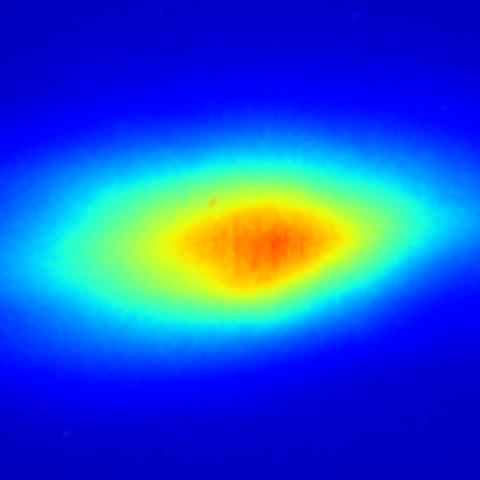What did the Scientists Discover?
Single-crystal diamonds made by chemical vapor deposition (CVD) are imperfect crystals with extended lattice defects also called mosaic crystals. Plates of these diamonds can contain large (~1x4 mm2), “flat” regions where the crystal lattice is unaffected by bending caused under typical inhomogeneous synthesis conditions. These “flat” regions still have a high-dislocation density, which preserves the mosaic character and can be used in a predictable manner for simultaneous focusing and monochromatization of polychromatic X-rays such as synchrotron radiation. In recent commissioning experiments at CHESS undulator beamlines, selected CVD diamond plates were used successfully in single-reflection (”side-bounce”) monochromators as shown in the figure to the right.
Broader Impacts of this work?
Contrary to the equilibrium-grown high-pressure high temperature (HPHT) material, CVD is widely available and relatively inexpensive. Using CVD diamonds in X-ray monochromators enables affordable compact systems operable in a laboratory with conventional X-ray sources, under extreme conditions as high radiation heat load optics at synchrotrons, or, possibly, as compact remote X-ray instrumentation for planetary missions.
Why is this important?
CVD diamond retains the exceptional physical properties of diamond such as record thermal conductivity, small thermal expansion, high radiation hardness, etc. X-ray monochromators based on CVD diamond crystals as demonstrated at CHESS are an intriguing and very cost effective application of CVD diamonds.
Why did this research need CHESS?
Interest in the development of efficient side-bounce monochromator technology exists at many US synchrotrons. However, until these recent tests using CHESS undulator sources, the necessary experiment data evaluating performance of CVD diamond in this application was not available. The newly constructed side-bounce beamlines at CHESS serve as the ultimate test-bed for critically evaluating the predicted performance.
Collaborators:
- Stanislav Stoupin, Cornell High Energy Synchrotron Source, Cornell University
- Thomas Krawczyk,Cornell High Energy Synchrotron Source, Cornell University
- Zunping Liu, Advanced Photon Source, Argonne National Laboratory, Lemont, IL
- Carl Franck, Cornell High Energy Synchrotron Source & Laboratory of Atomic and Solid State Physics, Cornell University
Publication Citation:
S. Stoupin, T. Krawczyk, Z. Liu, and C. Franck, “Selection of CVD Diamond Crystals for X-ray Monochromator Applications Using X-ray Diffraction Imaging,” Crystals, vol. 9, no. 8, p. 396, Aug. 2019. https://www.mdpi.com/2073-4352/9/8/396
How was the work funded?
The Cornell High Energy Synchrotron Source (CHESS) is supported by NSF under award DMR-1332208; the Cornell Center for Materials Research facility through DMR-1719875; APS by DOE Office of Science under Contract No. DE-AC02-06CH11357.
